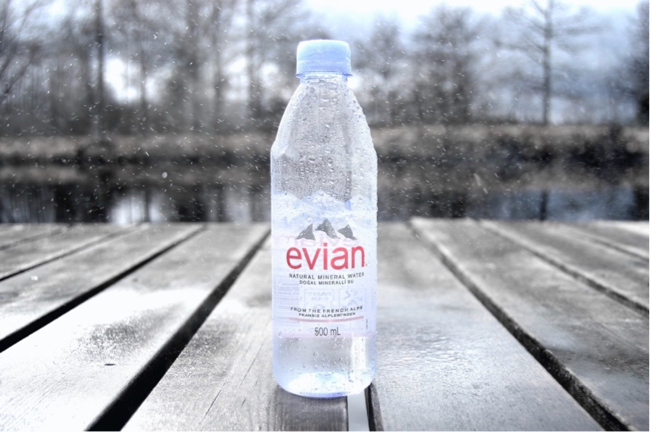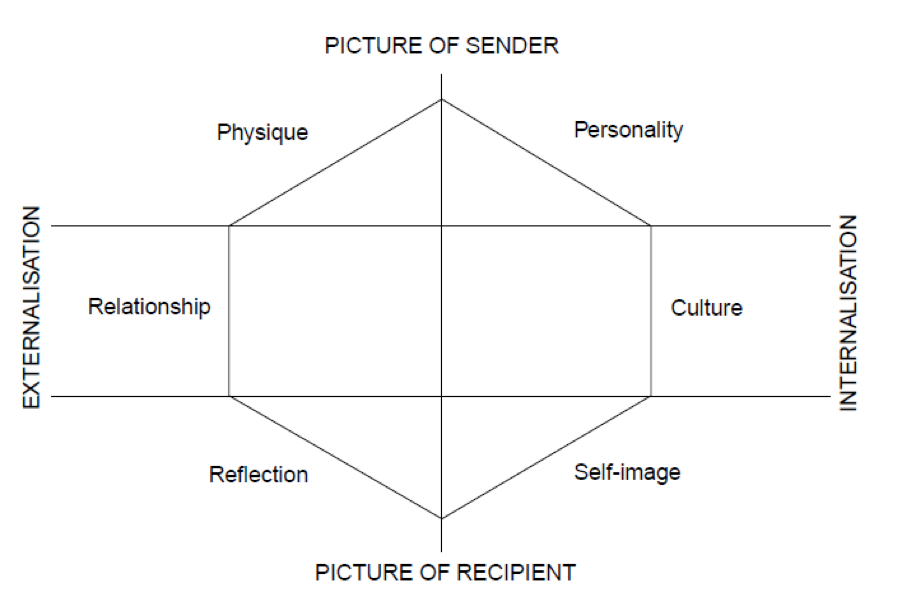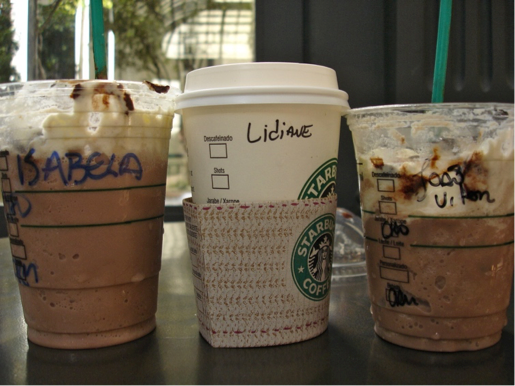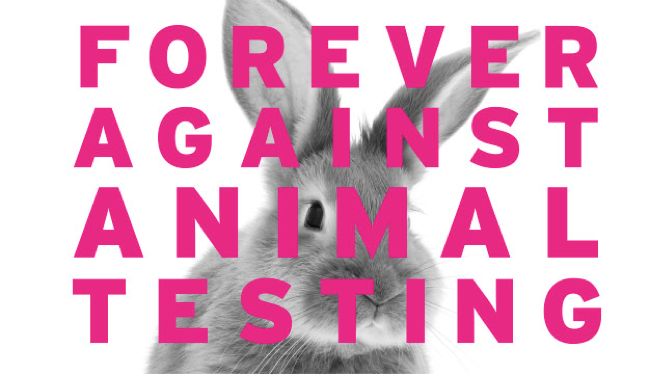Differentiate your Brand to stand out in a Cluttered Industry…
Imagine we give you 3 full bottles of mineral water. Each bottle is identical to one another. All three contain the same quantity of water. We ask you to use descriptive words to distinguish the three.
Chances are you’d describe them using adjectives that are pretty similar to each other. It’s hard to find any stark differences between these 3 bottles, isn’t it? Now… imagine we place labels on each of the bottles and each label is printed with one of the following words: ‘Evian’, ‘Aquafina’ and ‘Bisleri’.
Suddenly, it becomes easier to distinguish them. This is because each of these brands has unique brand characteristics that appeal to different audiences. This sudden addition of extra characteristics to each bottle/brand is due to differentiation.
Differentiation is about distinguishing a product from other similar products to a particular target audience. The most important differentiation is in the perceived benefits for the customer from consuming what the brand has to offer. Brands attempt to establish and maintain that perception through their packaging, positioning, the language they use in their communications, performance quality, the value-added services they offer and by various other means.
So why is differentiation so important?
Product or brand level differentiation helps in effectively communicating exactly what value your product has to offer that the consumers will not be able to get from any other brand out there. It will help you convey clearly what your product is offering and why it shouldn’t be confused with anything else.
Today, there are thousands of brands competing with each other in the market. Many of these brands offer products that are probably quite similar to their direct competitors. But they need to stand out. Otherwise, they can get lost in a sea of brands. This can also hamper their sales. How can they win the consumer’s attention and, ultimately, convince them that they are better than the others?
Creating differentiation by crafting a unique brand identity:
One of the keys to creating a strong differentiation is to craft a unique brand identity. The processes involved in creating a brand identity establish a mental image and foster an emotional connection between buyer and product. This identity includes symbols, such as a logo. It also includes media, such as advertisements. It also includes different events at which the brand makes its presence felt.
In 1986, J. Kapferer coined the concept of the Brand Identity Prism. This prism defines 6 characteristics of a brand. By distinguishing yourself in these arenas, your product will stand out. Let’s explore these factors along with examples of brands that have differentiated themselves based on these points.
The history of a brand and its evolution over the years create a sense of familiarity and intimacy with their consumers. There are many brands that capitalize on their legacy in order to differentiate themselves. Take, for example, Tata. The founder, Mr. Jamsetji Tata, is known as the man who introduced steel to India and brought electricity to Mumbai. He is also known as the man who built India’s first luxury hotel. With a legacy like that, is it any wonder that the Tata brand image is so strong?
Another way to utilize culture is by fostering your own culture around your brand. For example, Apple has created a special culture around its products. Fans of Apple products consider themselves to be different from regular PC users.
Personality:
Did you know 78% of consumers believe that brands which create customized and specialised content are more interested in fostering good relationships? Brand personality is shaped by customized content, the people depicted in ads, blogs, videos and other such content. The traits of those people tend to be associated with the brand itself. The people shown using these products help the customer identify better with the brand.
Dove has a distinct brand personality in terms of the kind of people they use in their advertisements. Their slogan of ‘Real Beauty’ is portrayed in their celebration of diverse body types, skin types and forms of beauty in their ads.
Their ads communicate that those who use Dove smash beauty stereotypes and are comfortable in their bodies. Their personality comes off as friendly, independent-minded, confident, and unique.
Another way to add to your brand’s personality is through celebrity endorsements. For example, a brand endorsed by Alia Bhatt appears more youth-friendly and fun.
Physical facets:
Style and form are what first meet the eye. The visual identity is the most obvious way to differentiate your brand. Whether it’s through the style or shape of the product itself or its packaging – a brand’s visual identity is the easiest way to differentiate yourself. Even something as seemingly superficial as colour makes a huge impact. Researchers have proven that colours are 85% of the reason influencing a consumer’s buying decision.
How well a product meets the consumer’s specifications, meets their expectations and user-friendliness and longevity also greatly distinguish a brand from the rest.
Reflection:
“Brands must empower their community to be change agents in their own right. To that end, they need to take on a mentoring role. This means the brand provides the tools, techniques, and strategies for their customers to become more effective marketers in achieving their own goals.”
-Simon Mainwaring
Reflection refers to who your customers are. What do they do? How will they use your product? The image of the brand that helps customers relate to it better. You’ll notice that there are some brands for ‘older people’, some brands that are considered more ‘youthful’, some are more ‘practical’ and some are for ‘creative’ folk – these are all reflections made by the consumer.
Relationship:
According to a study by Accenture Interactive, 91% of consumers are more likely to shop with brands that treat them in a personalized manner. This includes how the brand reaches out to its audience, connects with them and communicates to them. What is the relationship between the brand and the customer? Establishing this relationship can be done in many ways.
Starbuck’s baristas are famous for writing the customer name’s across their coffee cups. Sure, they’re famous for messing up names, too, but that’s a part of the appeal.
Ease of ordering, installation, and delivery also add to the relationship between brand and consumer. Ease of use also gives brands a great deal of customer goodwill. HTC, Samsung, and Apple offer differentiated after-purchase services which make their customers feel special and this sets them apart. Remembering a customer’s preferences and giving them future recommendations also fit into this category.
Self Image:
“You now have to decide what ‘image’ you want for your brand. Image means personality. Products, like people, have personalities, and they can make or break them in the marketplace.” – David Ogilvy
Consider the aspirations of your customers. Who do they want to be like? What qualities to they want to inculcate? And how will your product/brand help them hone these qualities? For example, The Body Shop conveys that it is an environmentally friendly brand which is conscious of numerous social issues. Their ideal audience are those who are concerned about these issues, too.
An additional factor that can add to your differentiation strategy is the channel of distribution. The route through which you distribute your product also adds to your brand identity. Do you want your product to appear upmarket? Then perhaps you should have your own boutique. Is your product targeted towards a larger audience? Then perhaps you should distribute your product through Flipkart.
It is by understanding these various factors that a brand can differentiate itself from its competitors. By channeling your efforts towards understanding your customer, their wants, desires, and aspirations, you’ll be well equipped to create an effective differentiation strategy. One that will add value to every facet of your customer-company relationship. A plan that will make your brand a leader in your segment. Remember to be as innovative as possible and not to shy away from risks and soon, you’ll have yourself an authentic and unique brand differentiation plan. Stay tuned to this space as we follow with a post showing many examples of brands that killed it with their differentiation strategy.
Write to us on info@lokusdesign.com to develop a a strong differentiation for your brand.









